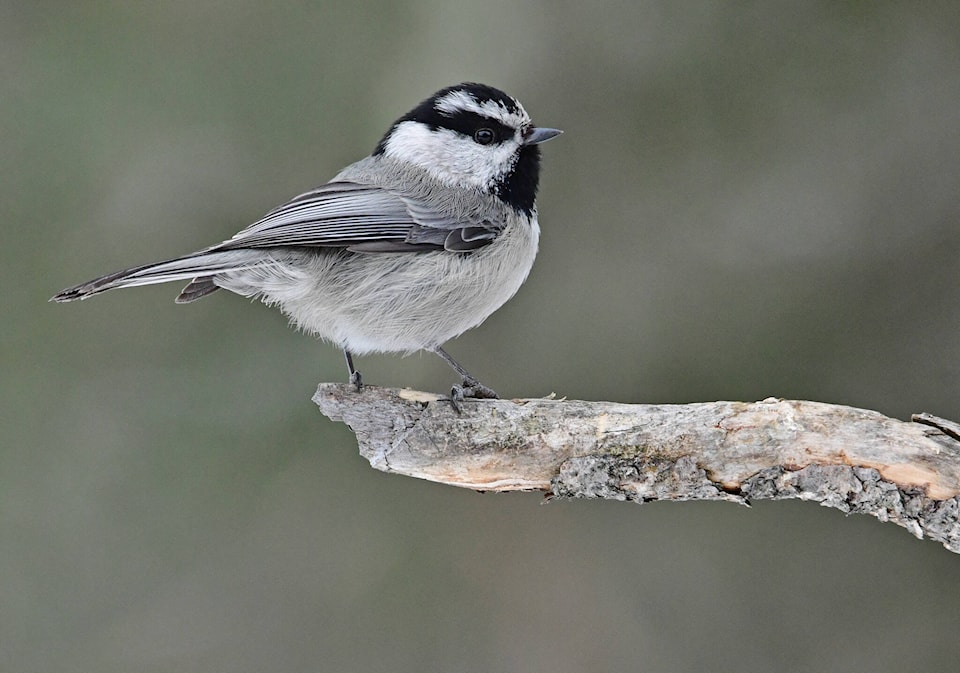Alberta is home to three species of chickadees. Most people are familiar with the common and abundant black-capped chickadee. The three other species are chestnut-backed (found only in the southwest), Boreal (found in coniferous forests) and the mountain-dwelling mountain chickadee. While mountain chickadees seldom show up as far east as Red Deer, they are common at feeders along the foothills and are one of the most common bird species encountered in our mountain parks.
Mountain chickadees living high in the snowy Sierra Nevada Mountains in Nevada have been the subject of some very intense and fascinating recent research. I have taken special interest in this research as I’ve snowshoed several times in the deep snows of these mountains and have always enjoyed being accosted by persistent mountain chickadees, looking for handouts.
Like all chickadees (and several other bird species), mountain chickadees hide food items each fall and rely on these hidden caches to get through long cold winters. The individuals that live at high elevations endure much harsher conditions than their lower-elevation cousins and must therefore have highly specialized spatial memories to survive. It is a matter of life and death for these birds to be able to remember where they stashed their food, with even small variations in memory influencing survival. It is these high-elevation toughies that the scientists have been studying.
Using a series of “smart” feeders and tagging individuals with RFID chips, the researchers assigned each chickadee to its own feeder portal. The birds would search various feeders until they found “their” feeder, upon which a portal would open for them to access sunflower seeds. The researchers tracked the number of tries it took for each bird to learn the location of its assigned portal.
Not surprisingly, some chickadees were more adept at quickly re-finding their portals. Also unsurprisingly, birds that performed better on these spatial memory tasks were more likely to survive and produce offspring. Natural selection has obviously favoured the individuals with better memories.
To understand the connection between spatial memory and genetics, the researchers then sequenced mountain chickadee genomes and found that genome differences between the good learners and the poor learners could be detected in areas of the brain associated with learning, memory and neuron development. Although the genetic basis for spatial memory has been identified in humans and other mammals, this is the first documented evidence of that connection in birds. Three cheers for mountain chickadees!
Myrna Pearman is a retired biologist, nature writer, photographer and author of several books. Her books are available at www.myrnapearman.com. She can be reached at myrna@myrnapearman.com.
